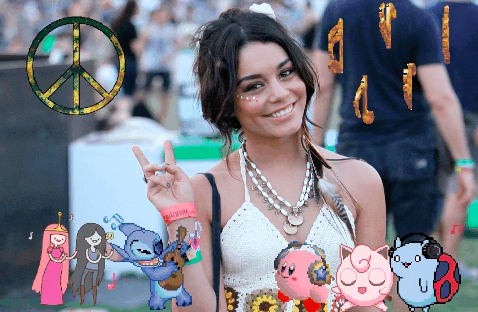In the past few years, music and arts festivals have become a large part of youth culture. Its easy enough to see why – the featured artists, the whacky outfits, the cool Instagram posts, and the overall experience of attending an event designed for celebration definitely makes for an appealing concept. However, festivals aren’t quite what they once were; the overall experience changes dramatically as a new demographic becomes invested. In the same way that Woodstock may act as a reflection of the ‘peace and love’ culture of the 60’s, modern festivals such as Splendour in the Grass or Coachella are reflective of modern socio-cultural changes, prompting a shift in the overall nature of music festivals and their reason for being. This isn’t necessarily a bad thing, and in fact can be considered a celebration of current youth culture, but there’s no denying that festivals now just aren’t quite as much about the music anymore.
It appears as though with each passing year a new artist is topping the charts, seemingly from out of no where (cough cough, Billie Eilish). As the music industry evolves, genres are often broadened and intertwined to create newer, fresher types of sounds – which these new artists often expand upon. These newer sounds have lately developed off the ever-popular genres of Hip Hop and RnB, shooting songs of this Hip Hop/RnB/EDM sub-genre to the tops of the charts, where they’ll likely remain for some time. The irritation of hearing the same five songs repeated over and over is frustrating, but occurs through the algorithms of streaming apps such as Spotify and Apple music measuring not only purchases, but the amount of times a song has been listened to. Combine this measurement system with people’s general content with listening to ‘Top 40’ playlists, and the results drive top songs, and therefore top artists, to stay on top – because they’re on all the playlists!

This change in measurement of what artists or genres of music are trending directly impacts who festival event organisers aim to book, for obvious reasons: the bigger the name, the more tickets sold.
And while being able to see a variety of the most popular acts all in one place is enticing, one of the greatest parts about attending music festivals is the ability to hear new artists and discover new favourites, a bonus often not utilised by modern festival-goers, and an oxymoron considering the desire for new sounds. Standing in a mosh pit with thousands of other festival attendees to see artists who consistently top the charts is great, but is an entirely different experience to seeing smaller, lesser known artists with less fans. These are the artists who are scheduled to perform earlier in the day, often at times when attendees have yet to arrive, and who are, in my opinion, more worthwhile to discover. These artists also tend to utilise traditional instruments, as opposed to altering their music digitally. And while there is no issue in purchasing tickets to see a popular artist, the opportunity to see performances of those who don’t top the charts – which is often more raw and entertaining to hear live – is dismissed by attendees, an opportunity that would have likely been jumped upon by festival attendees of the past.
Not only does the music differ, but the reasons for which we actually attend festivals have also shifted. Part of youth culture is caring more about experiences than possessions; being more interested in the things we do than the things we own. When it comes to festivals, this aspect of our culture is exemplified. Attending a music festival is an experience in its own right, and its an experience most want to have – regardless of whether or not they actually know any of the artists performing. Instead, modern music festivals can be seen as a fun event to hang with friends, have some drinks, dance, and socialise. This is only amplified by the opportunity to share the experience through social media, with many festivals promoting the usage of their hashtags, or by creating Snapchat filters specifically for the event. In turn, the artists booked may come secondary to the opportunity to enjoy a positive atmosphere that can be shared with a group of friends. In fact, just knowing a friend is attending an event makes you more likely to also purchase a ticket, based on the fear of missing out.
That’s right, FOMO is real. And its making people buy festival tickets.

However, arguably the biggest concern for festival goers isn’t the line up, or whether or not their friends are going, but rather; the outfits.
One of the biggest associations with music festivals today is the crazy, outlandish clothing that people choose to wear – myself being no exception to this concept. Festivals are often seen as an atmosphere that allows attendees to express themselves, whether that’s through the artists they watch, the way they dance, or the clothes they wear. What began as a simple act of self expression quickly became almost a requirement, as if a certain expectation is held – especially in the age of social media. Many attend festivals as a way to perhaps watch music and enjoy the company of friends, but also as an excuse to get that cool Instagram post, showing off their funky style. This differs greatly from the times when festival clothing was based more on comfort, with the knowledge that festivals are long, and you may get dirty.

All in all, the socio-cultural norms of any specific times are always going to have an impact on the events of that time, and youth culture is no different. One thing that has not changed, however, is the festival industry’s efforts to create enjoyable experiences and atmospheres that suit the wants and needs of attendees – no matter how different the festival scene becomes.

